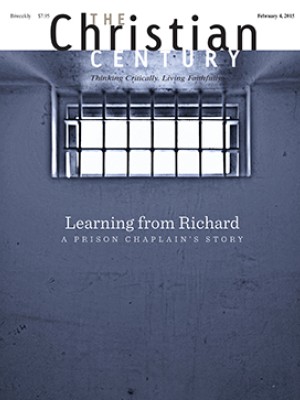Ukraine’s eastern Catholics equip soldiers to fight pro-Russia separatists
(The Christian Science Monitor) As the train bringing the wounded soldier home from the front line ground to a halt, the crowd on the platform burst into patriotic song. Ruslan Androsyuk’s three-year-old son jumped into his arms.
Relatives and friends waved balloons and Ukrainian flags, welcoming Androsyuk back after a mine ripped through his armored personnel carrier in the Donetsk region, leaving him with a broken leg, fractured ribs, and pierced lungs.
“If it wasn’t for his bulletproof vest he wouldn’t have survived,” said his wife, Olga, choking back tears.
But it wasn’t Ukraine’s government that supplied Androsyuk his gear. Like hundreds of other soldiers fighting against pro-Russian separatists in eastern Ukraine, his equipment was provided by the Ukrainian Greek Catholic Church.
After decades of marginalization by both Ukraine’s communist and post-communist regimes and its two dominant Orthodox churches, the UGCC is trying to establish itself as a major pro-European player by supplying government forces fighting in the east. By taking a direct role in the conflict, the UGCC hopes to win followers within a country that is becoming increasingly divided along ethnic and religious lines.
Read our latest issue or browse back issues.
Founded in the 16th century, the UGCC is the largest of 22 eastern Catholic churches, each in full communion with Rome. (Greek was added to distinguish it from Ukraine’s tiny community of Roman Catholics.)
With some 7 million followers, around 15 percent of Ukraine’s population, the UGCC competes with Ukraine’s two Orthodox churches—the Moscow and Kiev Patriarchates—for followers, influence, and political clout. (The Moscow branch claims 28 million adherents; the Kiev branch around half of that.)
Western and central Ukraine are home to over 3,000 UGCC parishes, the south and east have just 205. The church’s centuries-old headquarters recently relocated to Kiev, the capital.
But the UGCC prides itself on having shaped Ukraine’s cultural and political identity over the past 200 years.
Indeed, the church’s links to Ukrainian identity spurred Soviet dictator Joseph Stalin to dissolve the church in 1946.
It continued to hold secret services in cemeteries and forests, while UGCC priests delivered clandestine sermons in Soviet gulags. The UGCC also claims credit for keeping the Ukrainian language alive during communist times—not a word of Russian is uttered between sanctuary walls.
Today the UGCC wants to “assert itself beyond its far western heartland on the back of the growth in Ukrainian self-identity in more central regions of Ukraine,” said Geraldine Fagan, an independent scholar on religion in the former Soviet Union and author of Believing in Russia—Religious Policy after Communism.
To do that, she said, the church is tapping into the turmoil caused by the conflict in the east, which has killed over 4,700 people and helped bring the country to the brink of bankruptcy.
In a bustling warehouse on the edge of Ternopil, deep in a Catholic heartland where rosary beads abound and the shining domes of cathedrals dot the landscape, UGCC volunteers organize stacks of American and European medical kits. Tourniquets and syringes poke out from the donated boxes.
“We are the loudest and most visible in expressing our support for Ukraine’s nationhood,” said Valia Konotopska, the charity’s head.
The UGCC’s direct role in the conflict is substantial. The powerful UGCC dioceses of Lviv and Ternopil have donated over $200,000 worth of equipment since March to Ukrainian forces, mostly body armor, ammunition, helmets, sleeping bags, stretchers, and medical supplies, official church records show.
But the UGCC is not the only church to get involved in the fighting. The Kiev Patriarchate also donates gear—it has yet to provide figures—to government forces. And the Moscow Patriarchate has been linked to supplying the rebels.
“Various religious bodies have an interest in strengthening their national position in Ukraine because, unlike Russia, no one church predominates there,” Fagan said.
At a Sunday service in Ternopil’s 18th-century Cathedral of the Immaculate Conception, worshipers overflowed onto its gray and white stone plaza. The crowd was full of new parents, and the cry of babies mixed with the melodic hymns being broadcast through loudspeakers.
“Over the last year, we’ve seen more and more come to church,” said Petro Terletsky, visiting chaplain and professor in theology at the Ukrainian Catholic University in Lviv. “More turn to faith in times of crisis.”
He had just delivered a sermon comparing Jesus’ parable of the wicked tenants—whereby a landlord loses his vineyard’s fruits after lending to an ill-intentioned man—to Russia’s designs on eastern Ukraine.
“Our goal is to find a way to connect the east and west of Ukraine,” Terletsky said. “Buying body armor for our troops is part of this.”
Reporting for this article was supported by a grant from the International Reporting Project.
This article was edited on January 21, 2014.





